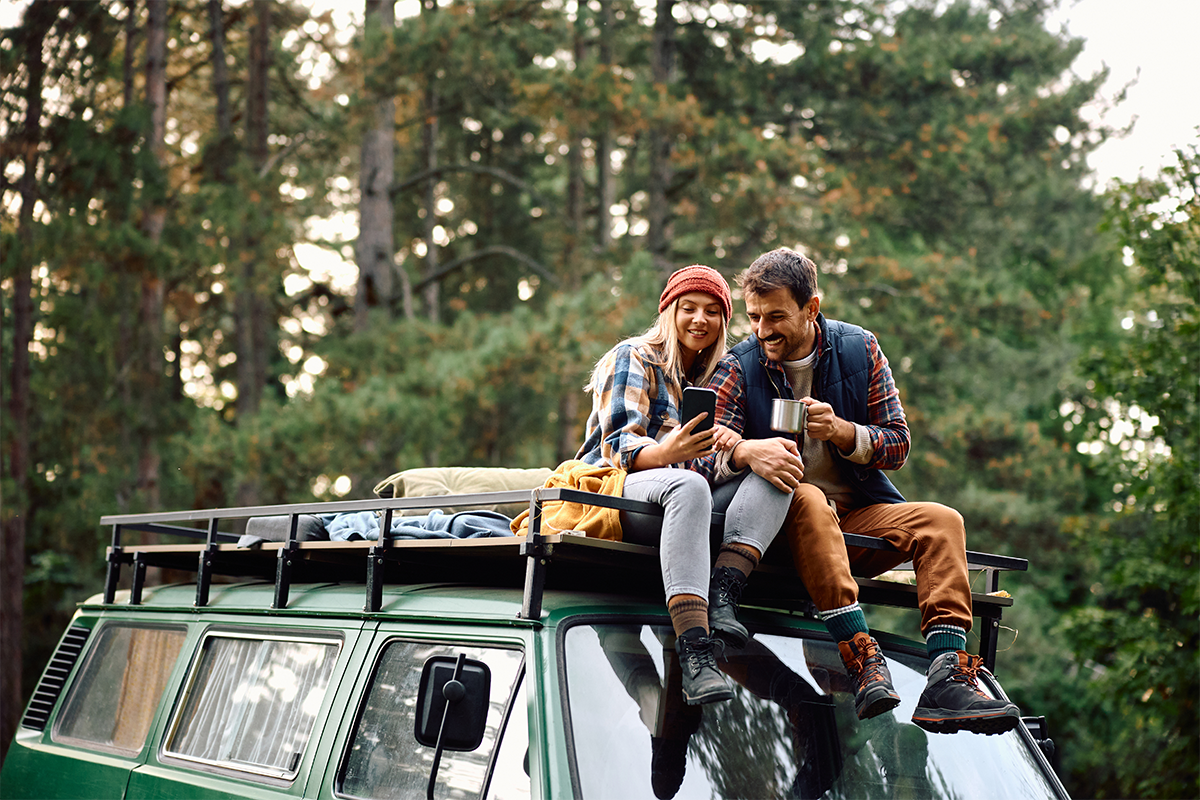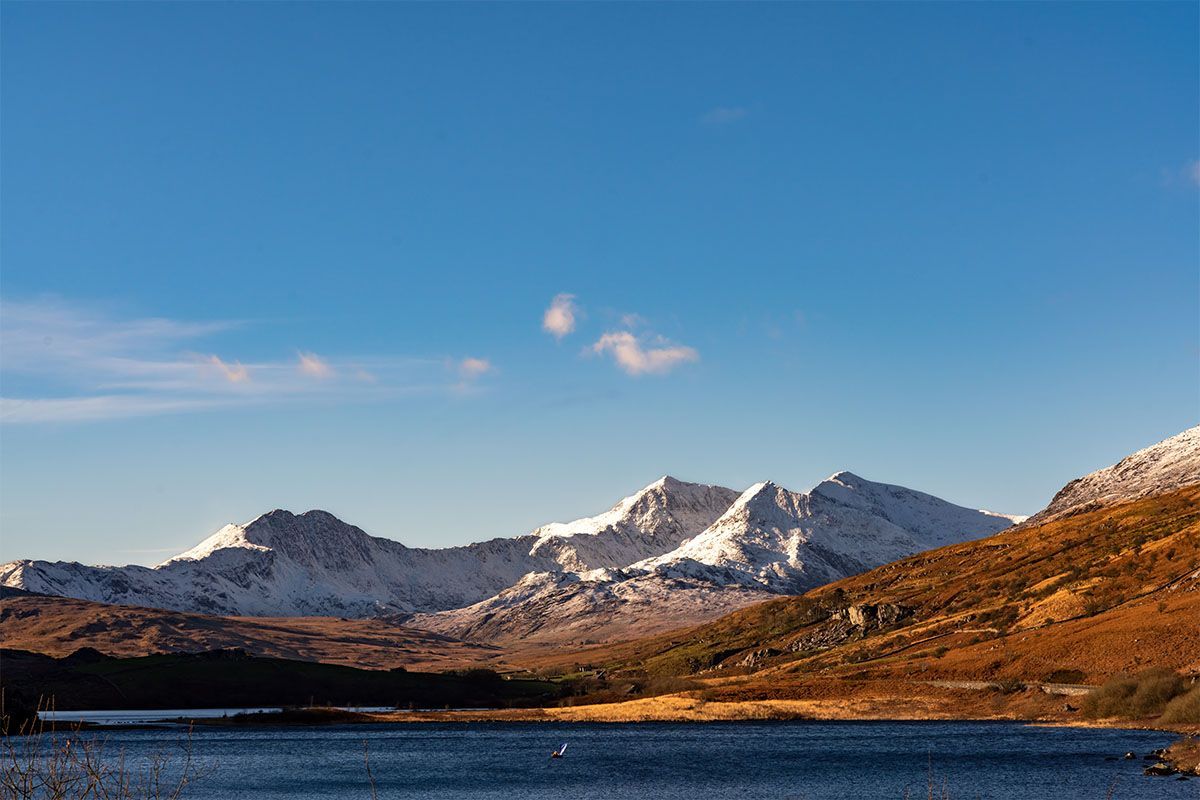How to Stay Warm When Camping
28 August 2025
Even when the skies are grey and the mornings cold, camping in Wales is magical. From misty valleys and crackling campfires to rosy cheeks and frosty air, there’s something timeless about wrapping yourself in nature’s quiet. But there’s one truth every camper learns early: staying warm is key to making it all comfortable and unforgettable.
So pack your layers, prep your hot drinks, and embrace the magic of the Welsh countryside. The crisp mornings and starlit nights are always better when you’re warm enough to enjoy them. At Rhyd y Galen, we know all about it.
1. Choose the Right Tent
First things first: if you're camping in unpredictable British weather, you need to think of your tent as more than just a roof. It’s your pop up home for the duration of your stay.
Opt for a three season tent with strong wind resistance and a high waterproof rating. If you're glamping or staying on one of our pitches, a four season option or even an insulated hut can add an extra layer of comfort. These tents offer sturdier poles, stronger fabric, and better insulation against wind and rain.
Pitching position also matters. Setting up on higher ground can be windier and colder, so look for sheltered spots near hedgerows, trees, or natural windbreaks. Avoid low dips in the land, as these collect cold air and damp overnight.
2. Sleep Smart
If you’re worried about the cold, then you’ve probably done your research into the warmest, cosiest sleeping bags you can find. And whilst these are your best option for bedding on chilly nights, there are also a few other things you can do to retain heat as you slumber:
Sleeping bag: Match its rating to the lowest temperature you expect; even summer can dip low in late spring or autumn. A bag rated to around –5 °C (20 °F) often hits the sweet spot for one sleeper comfort.
Sleeping pad: Don’t settle for anything less than an insulated, thick pad. A good pad separates you from frigid ground that’s more cold than comfort.
Liners or quilts: Add a fleece or synthetic liner inside your bag for extra warmth and easier layering control.
Thermal clothing: Your head will be exposed even when you’re tucked neatly into your sleeping cocoon, so make sure you have a hat on hand, and wrap up in thermal pyjamas.
Avoid too many layers: Contrary to popular belief, wearing many layers is not as effective as wearing only a couple really effective layers. This is because your body heat will heat up the clothing material to keep you warm, so you need clothing that effectively contains this heat. Thermals are the perfect solution.
3. Dress in Layers the Right Way
Clothing is another key element in the battle against the cold. However, as mentioned above, layering should not be seen as an attempt to pile on as many jumpers and puffers as possible. You need to use the right fabrics in the right order.
Start with a moisture wicking base layer. Merino wool or synthetic materials are ideal here because they keep sweat away from your skin, preventing that clammy, chilly feeling. Over this, add a mid layer like fleece or a lightweight puffer jacket to trap body heat. Finally, finish with a waterproof, windproof outer shell to shield you from damp Welsh breezes and sudden showers.
Don’t forget accessories: a warm hat and thick socks make a bigger difference than you might expect, since we lose much of our body heat through our heads and feet.
4. Preparing Morning, Noon, and Night

Beating the Morning Chill
There’s something special about waking up to dew dusted grass and birdsong, but those first moments outside your sleeping bag can feel painfully cold. The trick is to prepare before you go to bed. Fill a hot water bottle and place it inside your sleeping bag to prewarm it. Not only does this make slipping in at night more inviting, but it also takes the edge off in the morning when you’re reluctant to leave your cocoon.
Keep a thermos of hot tea or coffee ready to go. That first sip of something warm as you layer up can transform a frosty dawn into a much more pleasant start.
Crisp Evening Air
Evening chill arrives with the sunset. Settle in early and fire up the heat, literally:
Campfire or portable stove: Warm your hands, your food, and your mood. Toast marshmallows or wrap up near the warmth with a hot drink.
Extra blankets: A fleece throw or spare quilt makes lounging in your chair feel like a hug. Use them to keep legs and laps toasty.
Pack hand warmers: Reusable hand warmers are a true gift on colder evenings and can be easily slipped into pockets to whip out exactly when you need them.
Nighttime Rituals
Getting really cold is tough to fix with layers alone. Here’s how to stay comfy all night long:
Put on wool socks and a warm beanie, your body loses heat fast through your feet and head.
Use hot water bottles, or even zip locks filled with warm water, as portable heaters.
Vent your tent slightly rather than sealing it tight. Humidity and stale air will sneak in as frost otherwise, turning your inside into a damp freezer.
5. Staying Cosy Around the Campsite
Evenings are when the chill tends to creep in fastest, especially after sunset. This is the time to make your campsite feel like home.
A campfire is the classic choice, warming hands, feet, and spirits all at once. If your campsite allows fires, gather around and let the glow keep you cosy. For sites where open flames aren’t an option, a portable camping stove can also double as both a cooking tool and a small source of warmth.
Bring along a couple of blankets to drape over your lap or shoulders while sitting outside. A fleece throw or insulated picnic blanket adds that extra touch of comfort as you sip hot chocolate or share stories with friends.
6. Preparing Hot Meals and Drinks
There’s no better way to warm up than from the inside out. Eating a hot, hearty meal helps fuel your body and generate heat. Think stews, soups, pasta, or chilli; comfort foods that stick with you through the night. Prepping meals at home and simply reheating them on your stove can make this easier.
In the morning, quick cooking porridge or instant oats are your best friend. They provide energy for the day and heat you up before you even leave the tent. Always keep a stash of hot drink supplies, tea, coffee, or hot chocolate.
A steaming mug in your hands is a recipe for good morale.

7. Barricade the Breeze
Wind steals your heat faster than anything else. Here’s how to block it:
- Use natural windbreaks like bushes, trees, logs, or your vehicle.
- Set your tent on leeward spots, away from prevailing winds.
- Pin down tarps and vestibules tight to reduce internal drafts.
8. Warming Your Feet and Hands
Cold extremities can ruin a trip faster than anything else. To avoid numb toes, always pack a few pairs of wool socks and change them regularly. Damp socks are your enemy. Before bed, slip into a fresh, dry pair, and if it’s really cold, tuck a hand warmer packet down into your sleeping bag near your feet.
Hands also need attention. Gloves are a must.
9. Embrace the Frost
Let’s face it: the cold can be part of the fun. Crisp mornings feel fresher, starry nights sharper, and that first cuppa in camp feels sacred. But only if you’re warm enough to enjoy it. A bit of planning goes a long way, layer right, prep smart, and the chill doesn’t stand a chance.
Camping in Wales is full of wonder, no matter the season.
10. Choose the Right Campsite
We know that sometimes the cold can sap your energy and even your sense of adventure. But with the right setup, smart layering, and a few simple tricks, you can turn a chilly Welsh night into a cosy outdoor retreat.
At Rhyd y Galen, we’ve got the perfect spots for pitching up, warming up, and making memories. Whether you choose a traditional pitch or a snug glamping pod, we’ll help make sure your Welsh camping holiday is as warm as it is wonderful.






